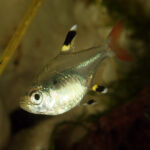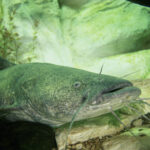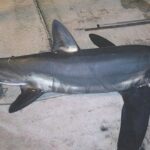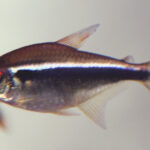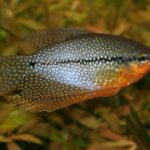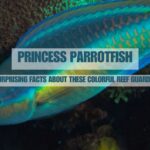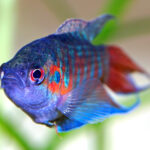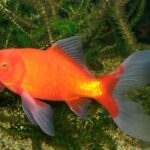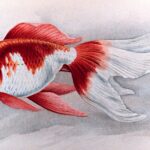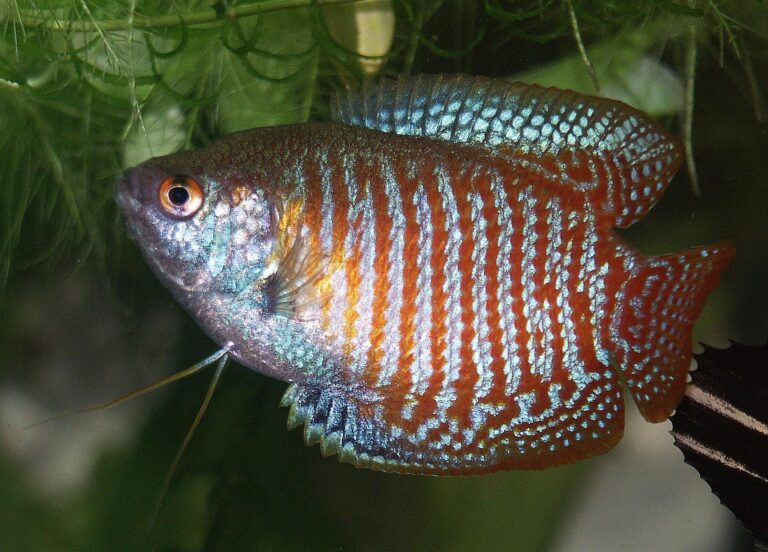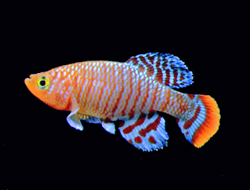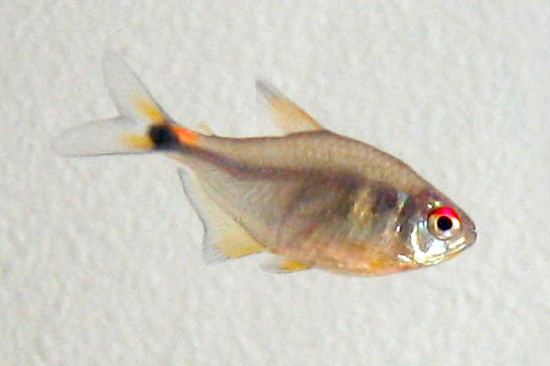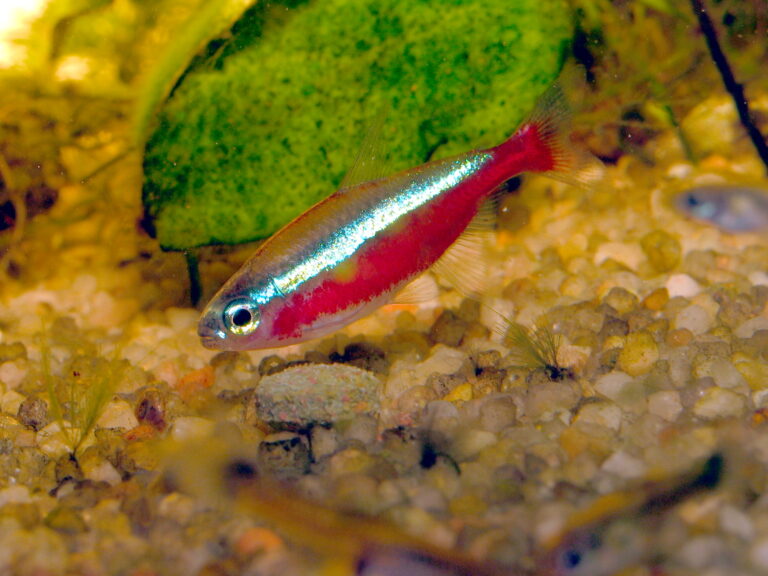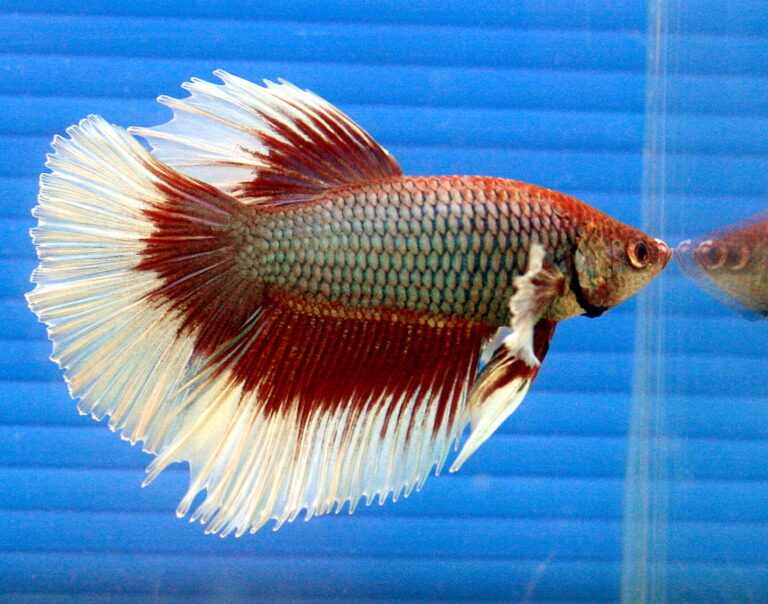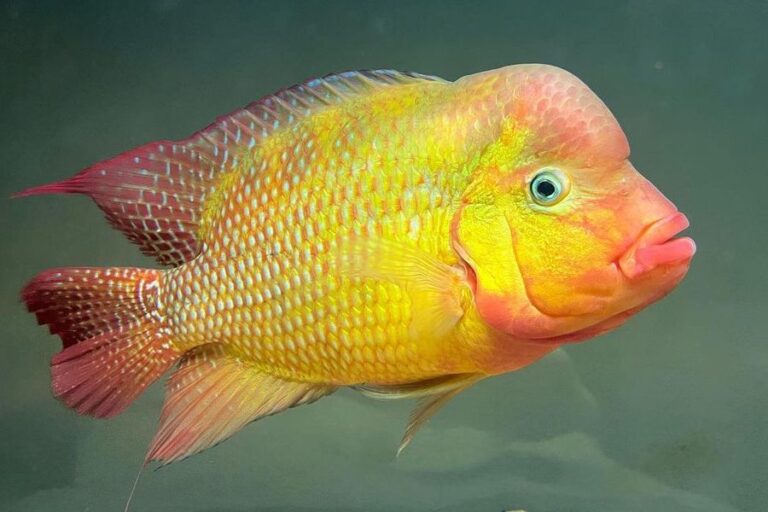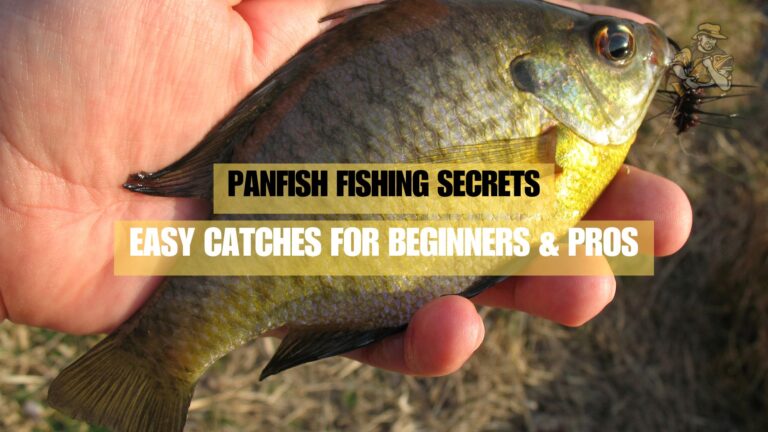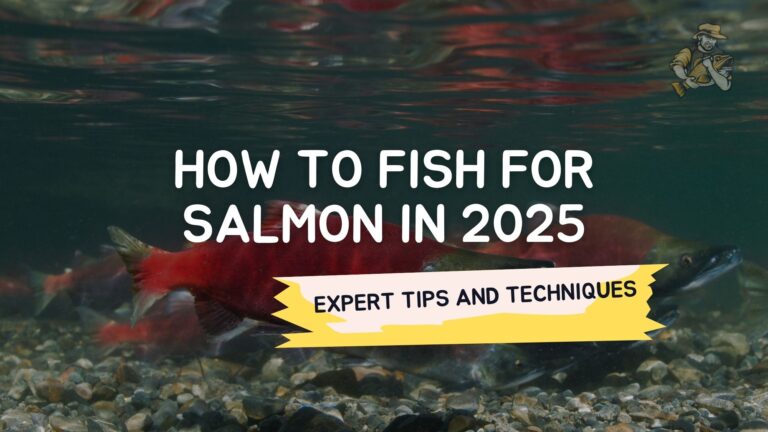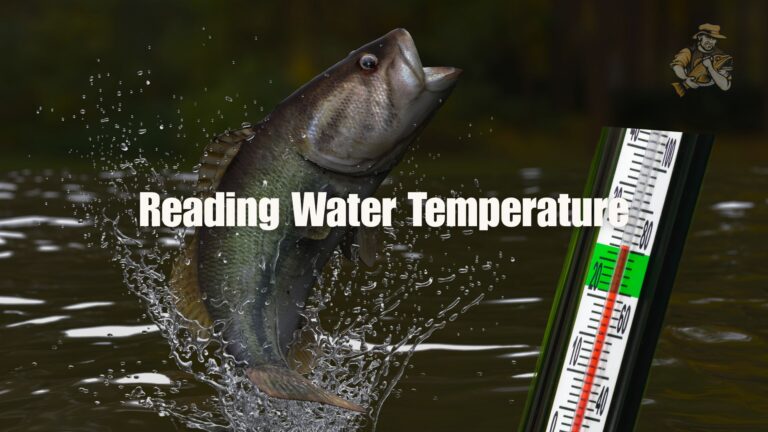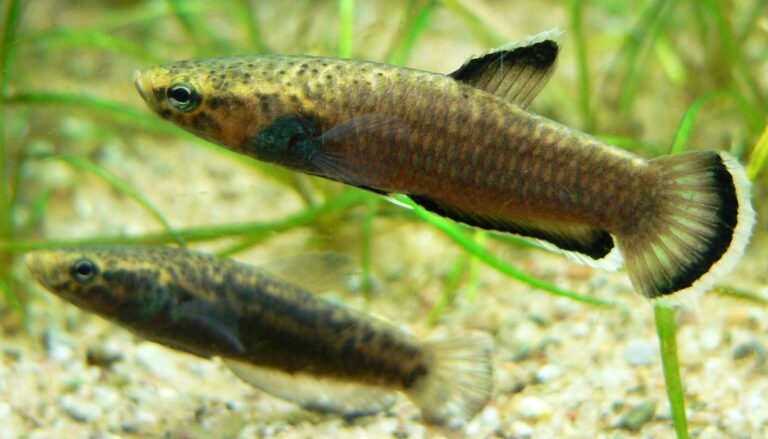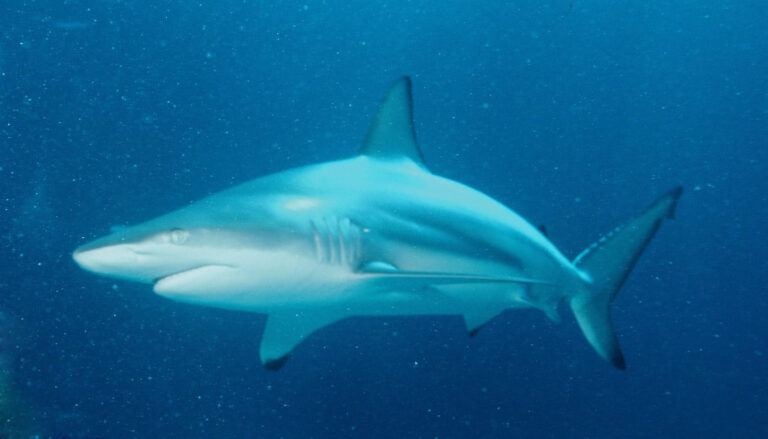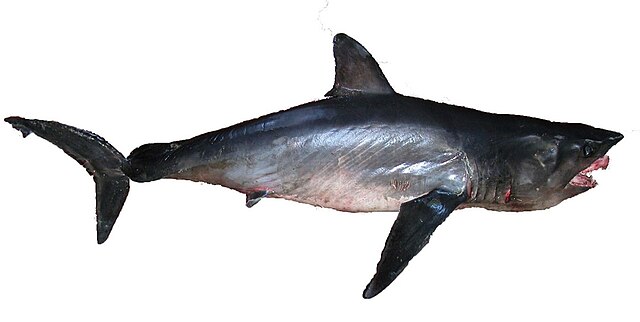Ranchu Goldfish
By Ryan Maron | Last Modified: July 1, 2025
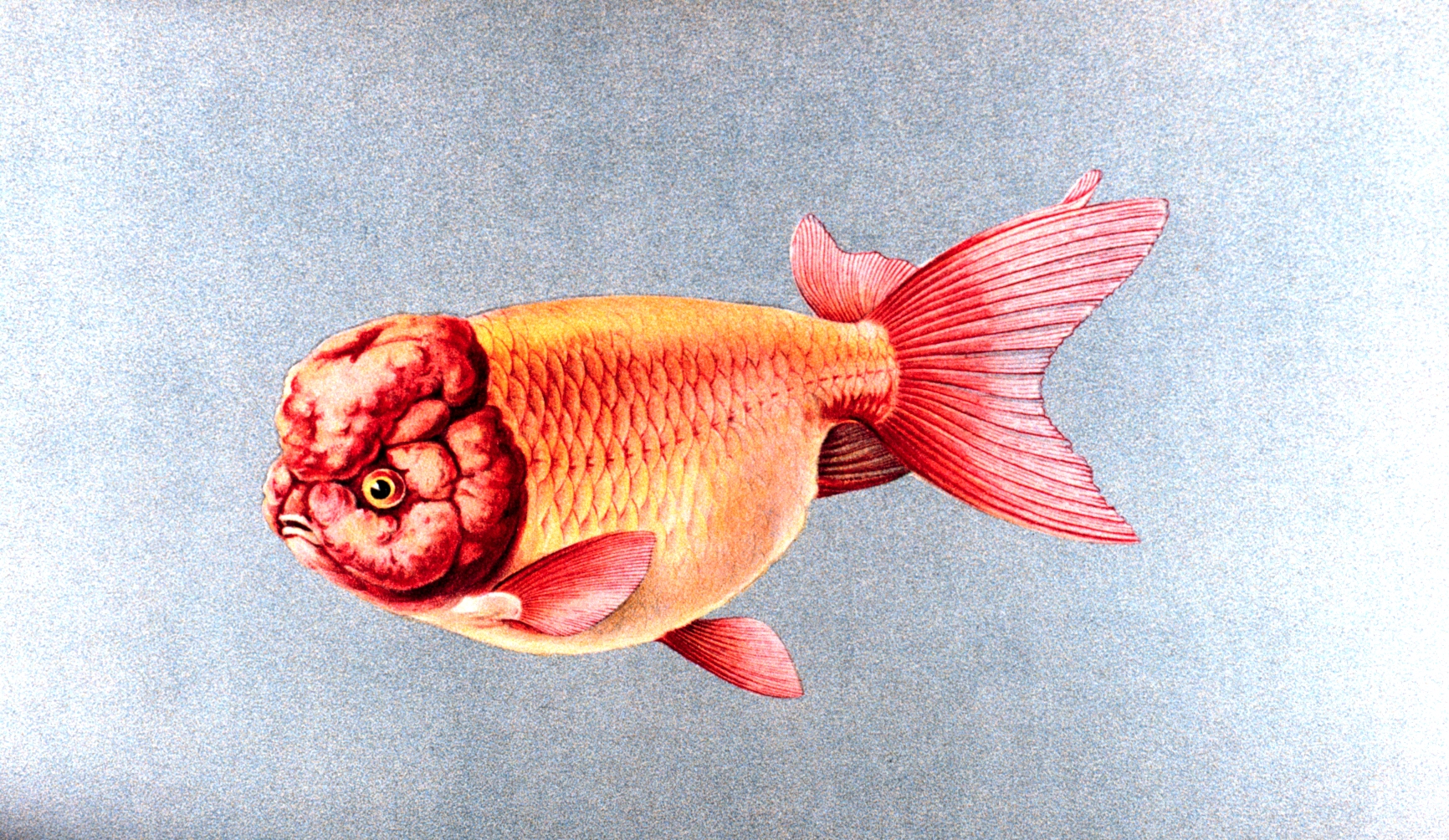
The Ranchu Goldfish represents one of the most distinctive and culturally significant ornamental fish varieties in the aquatic world. Known scientifically as *Carassius auratus* var. *ranchu*, this highly specialized goldfish breed originated in Japan during the 18th century and has since become a prized specimen among aquarium enthusiasts and competitive breeders worldwide. The Ranchu Goldfish stands apart from other goldfish varieties through its unique body morphology, characterized by the complete absence of a dorsal fin and a distinctive rounded, egg-shaped body profile that creates an unmistakable silhouette in aquatic environments.
This remarkable fish holds immense cultural importance in Japanese society, where it is often referred to as the “King of Goldfish” due to its regal appearance and the meticulous breeding practices required to achieve its characteristic form. The Ranchu serves as both an ornamental centerpiece in home aquariums and a competitive showcase specimen in formal goldfish exhibitions throughout Asia and internationally. Within aquatic ecosystems, particularly in controlled pond environments, Ranchu Goldfish function as peaceful bottom-dwelling omnivores that contribute to biological balance through their feeding behaviors and waste production, which supports beneficial bacterial colonies essential for water quality maintenance.
| Feature | Details |
|---|---|
| Common Name | Ranchu Goldfish |
| Scientific Name | Carassius auratus |
| Family | Cyprinidae |
| Typical Size | 15-20 cm (6-8 inches), 200-400 grams |
| Habitat | Freshwater aquariums and ponds |
| Diet | Omnivorous bottom-feeder |
| Distribution | Captive-bred worldwide |
| Conservation Status | Domesticated variety |
Taxonomy & Classification
The Ranchu Goldfish belongs to the family Cyprinidae, which encompasses the world’s largest family of freshwater fish species. Within this extensive taxonomic group, the Ranchu represents a highly specialized cultivar of *Carassius auratus*, the common goldfish that serves as the ancestral foundation for all ornamental goldfish varieties. The scientific classification places this species within the order Cypriniformes, class Actinopterygii, and phylum Chordata, establishing its position among the ray-finned fishes that dominate freshwater environments globally.
The taxonomic lineage of the Ranchu Goldfish traces back to the wild Prussian carp (*Carassius gibelio*), which underwent centuries of selective domestication in East Asian cultures. Modern genetic analysis reveals that goldfish varieties share common chromosomal arrangements with their wild counterparts, though extensive breeding has produced significant morphological variations that distinguish ornamental forms from their natural relatives.
Japanese breeders developed the Ranchu during the Edo period (1603-1868) through systematic selection for specific traits including dorsal finlessness, body curvature, and head development. The breed’s formal recognition occurred in the late 18th century, establishing standardized characteristics that continue to guide modern breeding programs. Contemporary taxonomic databases classify the Ranchu as a distinct variety rather than a separate species, acknowledging its genetic continuity with other goldfish forms while recognizing its unique phenotypic expression.
Physical Description
The Ranchu Goldfish exhibits a distinctive body morphology that immediately sets it apart from all other goldfish varieties. The most striking characteristic is the complete absence of a dorsal fin, creating a smooth, uninterrupted back line that flows seamlessly from the head to the tail region. This unique feature results from selective breeding for recessive genetic traits that suppress dorsal fin development during embryonic growth phases.
The body profile displays a pronounced egg-shaped or oval configuration, with significant depth relative to length measurements. Adult specimens typically achieve a body depth that measures 60-70% of their total length, creating the characteristic rounded appearance that defines the breed standard. The head region features a distinctive cap-like growth called the “wen,” which develops as the fish matures and can vary significantly in size and texture depending on genetic lineage and environmental conditions.
Coloration patterns in Ranchu Goldfish encompass a wide spectrum, including solid orange, red, white, black, and various combinations of these base colors. The most prized specimens often display balanced color distribution with clear demarcation between different hues. Scale types vary from normal metallic scales to nacreous (pearlescent) and matte finishes, each contributing to the overall visual appeal and market value of individual fish.
The tail fin configuration follows a double or triple-fold pattern, creating a flowing, fan-like appearance when viewed from behind. Pectoral and pelvic fins remain proportionally small relative to body size, contributing to the Ranchu’s characteristic swimming style that appears more deliberate and graceful compared to streamlined goldfish varieties.
Habitat & Distribution
The Ranchu Goldfish exists exclusively in human-controlled aquatic environments, having been developed through centuries of captive breeding programs that have eliminated any wild population. This ornamental variety thrives in freshwater systems including indoor aquariums, outdoor ponds, and specialized breeding facilities designed to optimize water quality parameters and environmental conditions essential for healthy development.
Optimal habitat conditions for Ranchu Goldfish require water temperatures ranging from 65-75°F (18-24°C), with pH levels maintained between 7.0-8.0 to support proper metabolic function and disease resistance. These fish demonstrate remarkable adaptability to various water hardness levels, though they perform best in moderately hard water with dissolved mineral content that supports scale development and coloration intensity.
The global distribution of Ranchu Goldfish spans virtually every continent where ornamental fish keeping occurs, with particularly strong populations in Japan, China, Southeast Asia, North America, and Europe. Japan remains the primary center for high-quality breeding stock, where traditional techniques combine with modern aquaculture methods to produce competition-grade specimens that command premium prices in international markets.
Captive environments must accommodate the Ranchu’s specific spatial requirements, including adequate swimming space that accounts for their reduced mobility compared to streamlined fish species. Successful habitat design incorporates gentle water circulation, appropriate substrate materials, and carefully planned decorative elements that enhance the fish’s natural behaviors without creating navigation obstacles.
Diet & Feeding Behavior
Ranchu Goldfish display omnivorous feeding characteristics that reflect their evolutionary heritage as opportunistic foragers in freshwater environments. Their natural feeding behavior involves methodical bottom-dwelling activities where they systematically search substrate materials for organic matter, small invertebrates, plant fragments, and detritus that forms the foundation of their nutritional intake.
The feeding apparatus of Ranchu Goldfish includes specialized pharyngeal teeth that enable efficient processing of both plant and animal matter. These structures allow them to crush small crustaceans, process fibrous plant materials, and extract nutrients from decomposing organic matter found in their environment. Their feeding behavior typically occurs throughout daylight hours, with peak activity periods coinciding with dawn and dusk when natural prey organisms become most active.
In captive environments, successful nutrition programs combine high-quality commercial foods with supplemental natural items including blanched vegetables, live or frozen invertebrates, and specialized goldfish pellets formulated to enhance coloration and support healthy growth patterns. Feeding frequency requires careful management, as Ranchu Goldfish lack true stomachs and instead process food continuously through extended digestive tracts that function most efficiently with multiple small meals rather than single large feedings.
The species demonstrates remarkable food recognition abilities, often learning to associate specific visual cues and feeding schedules with meal times. This behavioral adaptation allows experienced aquarists to develop interactive feeding relationships that enhance the fish’s quality of life while ensuring optimal nutritional delivery for sustained health and vibrant coloration.
Behavior & Adaptations
The behavioral profile of Ranchu Goldfish reflects their specialized morphology and centuries of selective breeding that has emphasized docility and ornamental appeal over survival instincts. These fish exhibit remarkably peaceful temperaments, displaying minimal territorial aggression even during breeding seasons when many fish species become notably more defensive of their space and resources.
Swimming patterns in Ranchu Goldfish differ significantly from their streamlined relatives, featuring slower, more deliberate movements that accommodate their rounded body shape and absence of dorsal fins. This unique locomotion creates a distinctive wobbling motion that many enthusiasts find particularly appealing, though it does limit their ability to compete with faster fish species for food resources in mixed-species environments.
Social behaviors demonstrate strong schooling tendencies when kept in groups, with individual fish often displaying synchronized swimming patterns and coordinated feeding activities. The species shows remarkable adaptability to human presence, frequently approaching aquarium glass when keepers are nearby and demonstrating learned responses to feeding cues and routine maintenance activities.
Seasonal behavioral changes become apparent in outdoor pond environments where Ranchu Goldfish experience natural temperature fluctuations. During cooler months, activity levels decrease significantly as metabolic rates slow in response to reduced water temperatures. This natural adaptation allows them to survive in climates with seasonal temperature variations, though careful monitoring remains essential to prevent cold-related health complications.
The absence of dorsal fins creates unique stability challenges that Ranchu Goldfish have adapted to through modified swimming techniques and enhanced use of their pectoral fins for directional control. This morphological adaptation demonstrates the species’ remarkable ability to function effectively despite significant departures from typical fish body plans.
Reproduction & Life Cycle
The reproductive cycle of Ranchu Goldfish follows seasonal patterns typically triggered by gradual temperature increases and extended daylight periods that simulate natural spring conditions. Breeding behavior becomes apparent when water temperatures reach 68-72°F (20-22°C), at which point males develop distinctive breeding tubercles on their gill covers and pectoral fins while females show increased abdominal swelling due to developing eggs.
Courtship behaviors involve persistent male chasing of females, characterized by gentle nudging movements directed toward the female’s abdomen to encourage egg release. This process can continue for several hours or even days until environmental conditions and female readiness align to trigger spawning activity. The actual spawning event typically occurs during early morning hours when water temperatures are most stable.
Female Ranchu Goldfish can produce between 2,000-10,000 eggs during a single spawning event, depending on their age, size, and nutritional condition. These adhesive eggs attach to aquatic vegetation, spawning mops, or other surfaces provided in breeding environments. The eggs are transparent to slightly amber in color and measure approximately 1-1.5 millimeters in diameter.
Incubation periods range from 4-7 days depending on water temperature, with optimal hatching occurring at 72-75°F (22-24°C). Newly hatched fry initially survive on yolk sac nutrients for 2-3 days before beginning active feeding on microscopic organisms. The characteristic Ranchu body shape begins developing after 6-8 weeks of growth, though full adult characteristics may not appear until the fish reaches 12-18 months of age.
Successful breeding programs require careful genetic management to maintain desirable traits while avoiding inbreeding depression that can compromise health and vitality in offspring generations. Professional breeders often maintain detailed lineage records to optimize breeding selections for specific characteristics.
Predators & Threats
In captive environments, Ranchu Goldfish face limited natural predation but remain vulnerable to various opportunistic predators that can access their aquatic habitats. Outdoor pond installations frequently attract avian predators including herons, egrets, kingfishers, and cormorants that recognize goldfish as easily accessible prey items. The Ranchu’s distinctive swimming style and bright coloration make them particularly conspicuous to aerial predators scanning water surfaces.
Mammalian threats include raccoons, cats, and other small carnivores capable of accessing shallow pond areas where Ranchu Goldfish may venture during feeding or breeding activities. These predators pose the greatest risk during dawn and dusk periods when natural hunting behaviors peak and fish activity levels increase near water surfaces.
Aquatic predators represent minimal concerns in properly managed captive environments, though introduction of incompatible species can create predation pressure. Large aggressive fish, snapping turtles, and certain amphibians may pose threats if inadvertently introduced to Ranchu habitats through contaminated water sources or improper species selection.
Disease represents the most significant threat category for Ranchu Goldfish populations, with their specialized morphology creating increased susceptibility to certain health conditions. The prominent head growth can harbor bacterial infections, while their reduced swimming efficiency may compromise their ability to maintain optimal water circulation over gill surfaces, potentially leading to respiratory complications.
Environmental stressors including poor water quality, temperature fluctuations, and inadequate nutrition create secondary threats by compromising immune system function and increasing vulnerability to opportunistic pathogens. Careful habitat management and preventive health protocols remain essential for minimizing these risk factors in captive populations.
Conservation Status
The Ranchu Goldfish exists exclusively as a domesticated ornamental variety with no wild populations requiring conservation protection. As a selectively bred cultivar of *Carassius auratus*, the species’ continued existence depends entirely on human breeding programs and the sustained interest of aquaculture enthusiasts worldwide. This unique conservation status places the Ranchu in a category distinct from wild fish species that face habitat loss, overfishing, or environmental degradation.
Genetic diversity within Ranchu populations represents the primary conservation concern, as intensive selective breeding for specific physical traits can lead to reduced genetic variability and increased susceptibility to diseases or environmental stressors. Professional breeding programs increasingly recognize the importance of maintaining diverse genetic lines to ensure long-term population health and vitality.
International trade regulations governing ornamental fish species generally include Ranchu Goldfish under broader goldfish classifications, with most countries permitting import and export activities subject to standard health certification requirements. These regulatory frameworks help prevent disease transmission while supporting the global distribution networks that maintain genetic diversity across geographically separated breeding populations.
The conservation of traditional breeding knowledge represents another important aspect of Ranchu preservation, particularly in Japan where centuries of accumulated expertise guide modern breeding practices. Organizations dedicated to preserving these cultural traditions work to document breeding techniques and maintain bloodlines that represent historical genetic resources.
Climate change impacts on Ranchu conservation remain largely indirect, potentially affecting the energy costs and water availability for indoor breeding facilities while creating temperature management challenges for outdoor operations in regions experiencing increased weather extremes.
Human Interaction
The relationship between humans and Ranchu Goldfish spans over three centuries of intensive selective breeding, cultural integration, and commercial development that has created one of the most specialized ornamental fish varieties in existence. In Japanese culture, the Ranchu holds particular significance as a symbol of prosperity and artistic achievement, with master breeders achieving social recognition comparable to skilled craftsmen in other traditional arts.
Commercial aspects of Ranchu breeding support substantial economic activity within the global ornamental fish industry, with premium specimens commanding prices ranging from hundreds to thousands of dollars depending on their quality and bloodline heritage. Professional breeding operations in Japan, China, and other Asian countries maintain extensive facilities dedicated to producing competition-grade fish for both domestic and international markets.
Competitive exhibition provides a unique human interaction dimension where Ranchu Goldfish serve as living art objects judged according to strict standards governing body proportion, coloration, swimming style, and overall aesthetic appeal. These competitions foster community relationships among enthusiasts while preserving traditional evaluation criteria that guide breeding program objectives.
Educational applications of Ranchu Goldfish extend beyond ornamental keeping to include genetic studies, aquaculture research, and demonstrations of selective breeding principles in academic settings. Their dramatic departure from wild-type goldfish morphology provides clear examples of human influence on animal development and the potential for rapid evolutionary change under controlled conditions.
Betta fish varieties and other specialized ornamental species share similar human interaction patterns, though few match the cultural significance and breeding complexity associated with high-quality Ranchu specimens.
Interesting Facts
The Ranchu Goldfish possesses several remarkable characteristics that distinguish it from virtually all other ornamental fish species. The complete absence of a dorsal fin results from a recessive genetic mutation that breeders have selectively maintained for over 200 years, creating a trait combination that would likely prove disadvantageous in wild environments but produces the distinctive silhouette prized in ornamental contexts.
The development of the characteristic head cap, or “wen,” involves complex interactions between genetic factors and environmental conditions, with some specimens developing elaborate growth patterns that can obscure vision if not properly managed through selective breeding practices. This feature continues growing throughout the fish’s lifetime, requiring careful genetic selection to maintain optimal proportions.
Ranchu Goldfish demonstrate remarkable longevity potential, with properly maintained specimens living 15-20 years or more in optimal conditions. This extended lifespan allows for the development of strong bonds between keepers and individual fish, contributing to their appeal as companion animals rather than merely decorative objects.
The swimming style of Ranchu Goldfish creates unique hydrodynamic challenges that they overcome through increased reliance on pectoral fin propulsion and modified body undulation patterns. Scientific studies of their locomotion have contributed to understanding of fish swimming mechanics and the relationship between body morphology and movement efficiency.
Temperature sensitivity in Ranchu Goldfish exceeds that of most goldfish varieties, with rapid temperature changes potentially causing swim bladder disorders or other health complications. This characteristic requires careful environmental management but also demonstrates the remarkable physiological adaptations that occur through intensive selective breeding programs.
Traditional Japanese breeding techniques include specialized feeding regimens incorporating live foods, seasonal temperature cycles, and water quality parameters that differ significantly from standard aquarium keeping practices, reflecting centuries of accumulated knowledge about optimizing Ranchu development and health.
Frequently Asked Questions
What makes Ranchu Goldfish different from other goldfish varieties?
Ranchu Goldfish are distinguished by their complete lack of dorsal fins, distinctive egg-shaped body profile, and characteristic head cap development. These features result from centuries of selective breeding that has created morphological traits unique among goldfish varieties. Their swimming style and behavioral patterns also differ significantly from streamlined goldfish types, requiring specialized care considerations and habitat modifications.
How long do Ranchu Goldfish typically live in captivity?
With proper care and optimal environmental conditions, Ranchu Goldfish can live 15-20 years or more in captivity. Their longevity depends heavily on water quality maintenance, appropriate nutrition, disease prevention, and genetic factors inherited from their breeding lineage. High-quality specimens from reputable breeders often demonstrate greater longevity potential than mass-produced varieties.
What are the specific care requirements for keeping Ranchu Goldfish healthy?
Ranchu Goldfish require stable water temperatures between 65-75°F, pH levels of 7.0-8.0, and excellent filtration to maintain water quality. Their specialized morphology demands gentle water circulation, careful feeding schedules with multiple small meals daily, and spacious environments that accommodate their unique swimming patterns. Regular health monitoring and preventive care protocols are essential for maintaining their wellbeing.
Can Ranchu Goldfish be kept with other fish species?
Ranchu Goldfish are generally peaceful and can coexist with other goldfish varieties, though their slower swimming speed may create feeding competition issues. They should not be housed with aggressive species or fast-swimming fish that might outcompete them for food resources. Compatible tankmates include other fancy goldfish varieties, certain catfish species, and peaceful bottom-dwelling fish that occupy different ecological niches.
Conclusion
The Ranchu Goldfish stands as a remarkable testament to the transformative power of selective breeding and cultural dedication in creating specialized ornamental fish varieties. Through centuries of careful genetic management and artistic vision, Japanese breeders developed a unique aquatic companion that combines distinctive physical characteristics with peaceful temperament and remarkable adaptability to human care. The species’ continued popularity among aquarium enthusiasts worldwide demonstrates the enduring appeal of thoughtfully designed ornamental fish that serve as living art forms while providing educational insights into genetics, aquaculture, and the profound relationship between humans and aquatic life.
Share The Article:
More Fish Species:
-
Dwarf Gourami
The Dwarf Gourami (Trichogaster lalius) stands as one of the most popular freshwater aquarium fish species, renowned for its…
-
Killifish
Killifish represent one of the most diverse and ecologically significant groups of small freshwater and brackish water fish, comprising…
-
Head and Tail Light Tetra
The Head and Tail Light Tetra (*Hemigrammus ocellifer*) stands as one of South America’s most distinctive characin species, instantly…
-
Cardinal Tetra
The Cardinal Tetra (Paracheirodon axelrodi) stands as one of the most vibrant and sought-after freshwater aquarium fish in the…
-
Half Moon Betta
The Half Moon Betta (Betta splendens) represents one of the most distinctive and sought-after varieties within the Siamese fighting…
-
Red Devil Cichlid
The Red Devil Cichlid stands as one of Central America’s most formidable and captivating freshwater predators, renowned for its…
Discover
-
15 Panfish Fishing Secrets: Easy Catches for Beginners & Pros
You know what’s funny about panfish? These little fighters have probably hooked more new anglers than any other species,…
-
Master Deep Ocean Fishing: Proven Methods for Massive Catches
There’s something almost magical about heading far offshore, where the continental shelf drops away and you’re floating above thousands…
-
How to Fish for Salmon in 2025: Expert Tips and Techniques
Few fishing experiences match the thrill of feeling a salmon take your line. These powerful fish have captivated anglers…
-
Reading Water Temperature: Seasonal Cues for Better Fishing
I’ve spent more mornings than I can count staring at a thermometer clipped to my fishing line, watching those…
-
Basic Fishing Techniques: Master the Fundamentals
There’s something magical about that first tug on your fishing line. I still remember mine, a scrappy bluegill on…
-
How to Spool a Baitcaster for Beginners: 6 Simple Steps
I remember the first time I tried spooling a baitcaster reel. What should have been a simple 15-minute job…
Discover
-
How to Fish in Murky Water: Expert Michigan Angler Shares Secrets
Last Tuesday, I was standing knee-deep in chocolate-colored water where Kellogg Creek dumps into the Kalamazoo River. Water visibility:…
-
Betta Fish
The Betta Fish, scientifically known as Betta splendens, is one of the most visually captivating and widely recognized freshwater…
-
Fishing with Kids: How to Make It Fun and Educational
I’ll never forget the look on my son Tommy’s face when he caught his first bluegill. He was six,…
-
Texas Saltwater Fishing: Essential Tips From Adam
It was June 2010, and man was I cocky heading into that first Texas saltwater trip. Drove down from…
-
Blacktip Shark
The Blacktip Shark (Carcharhinus limbatus) stands as one of the most recognizable and ecologically significant predators in tropical and…
-
Longfin Mako Shark
The Longfin Mako Shark represents one of nature’s most enigmatic and misunderstood predators, embodying both the raw power and…

